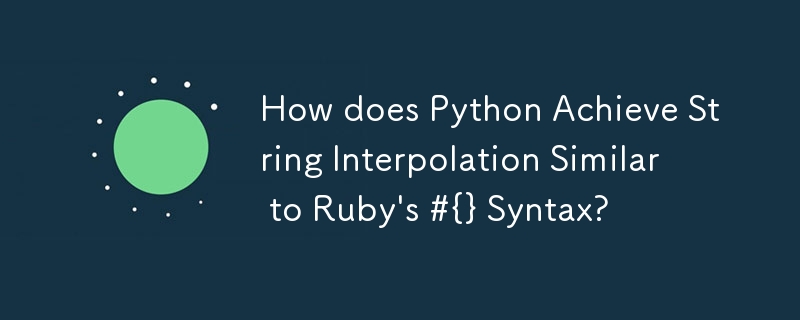Python如何實作類似Ruby的#{}語法的字串插值?
- Mary-Kate Olsen原創
- 2024-11-07 04:40:02600瀏覽

Python 相當於 Ruby 的字串插值
在 Ruby 中,字串插值是使用 #{} 語法實現的。例如:
name = "Spongebob Squarepants"
puts "Who lives in a Pineapple under the sea? \n#{name}."
問題:Python 中是否有類似的字串插值機制?
答案:
從Python 3.6開始,引入了字串插值語法,類似於Ruby的#{}插值。在Python 3.6 及更高版本中,f-strings 語法允許將表達式嵌入到字串中,如下所示:
name = "Spongebob Squarepants"
print(f"Who lives in a Pineapple under the sea? {name}.")
在Python 3.6 之前,% 運算子通常用於字串插值。第一個運算元是要插值的字串,而第二個運算元可以是將欄位名稱與要插值的值關聯起來的「對應」。
使用 Python 的 .format() 方法實作字串插值:
name = "Spongebob Squarepants"
print("Who lives in a Pineapple under the sea? {name!s}.".format(**locals()))
最後, string.Template 類別提供了另一種方法:
tmpl = string.Template("Who lives in a Pineapple under the sea? $name.")
print(tmpl.substitute(name="Spongebob Squarepants"))以上是Python如何實作類似Ruby的#{}語法的字串插值?的詳細內容。更多資訊請關注PHP中文網其他相關文章!
陳述:
本文內容由網友自願投稿,版權歸原作者所有。本站不承擔相應的法律責任。如發現涉嫌抄襲或侵權的內容,請聯絡admin@php.cn

